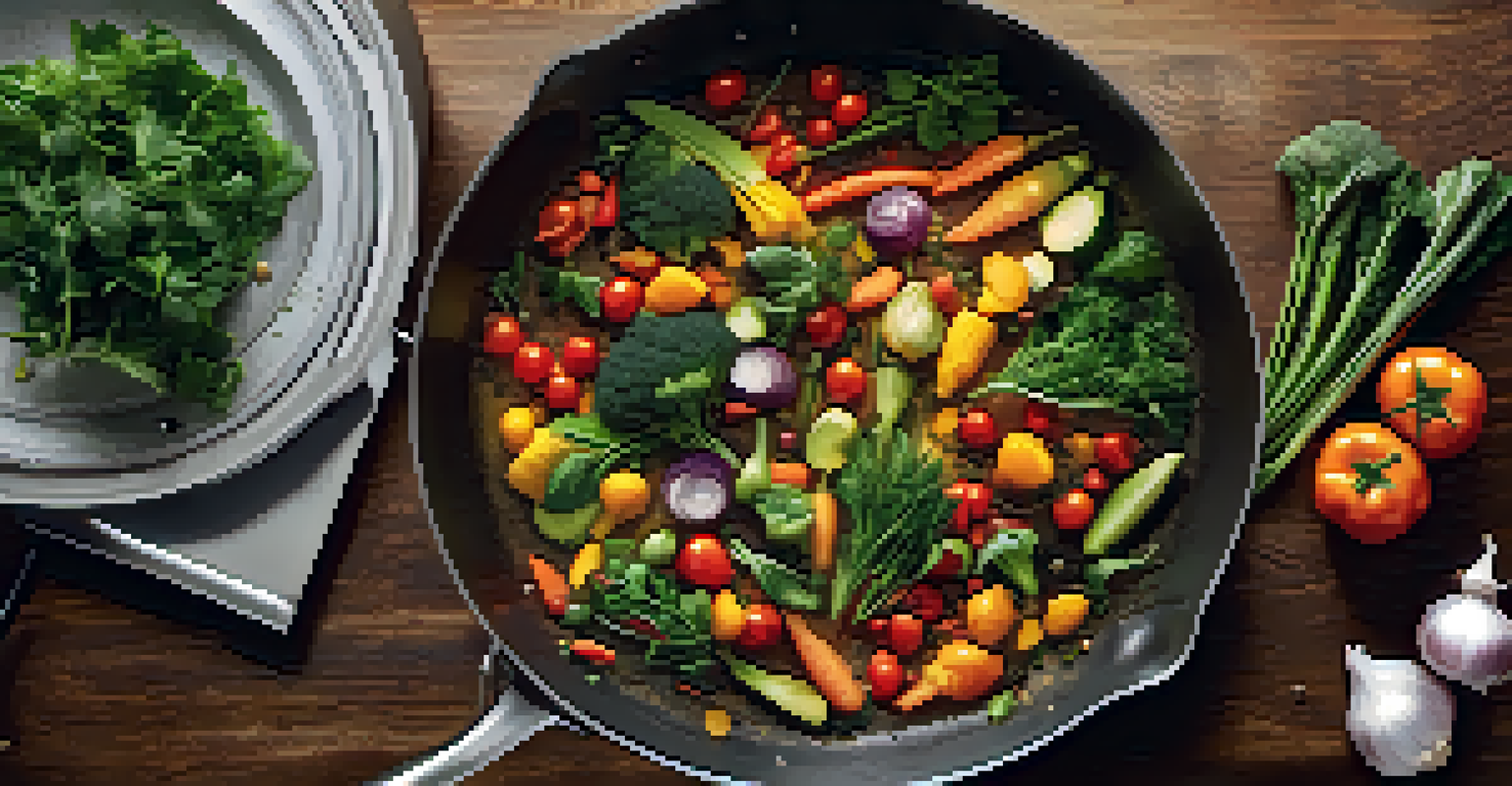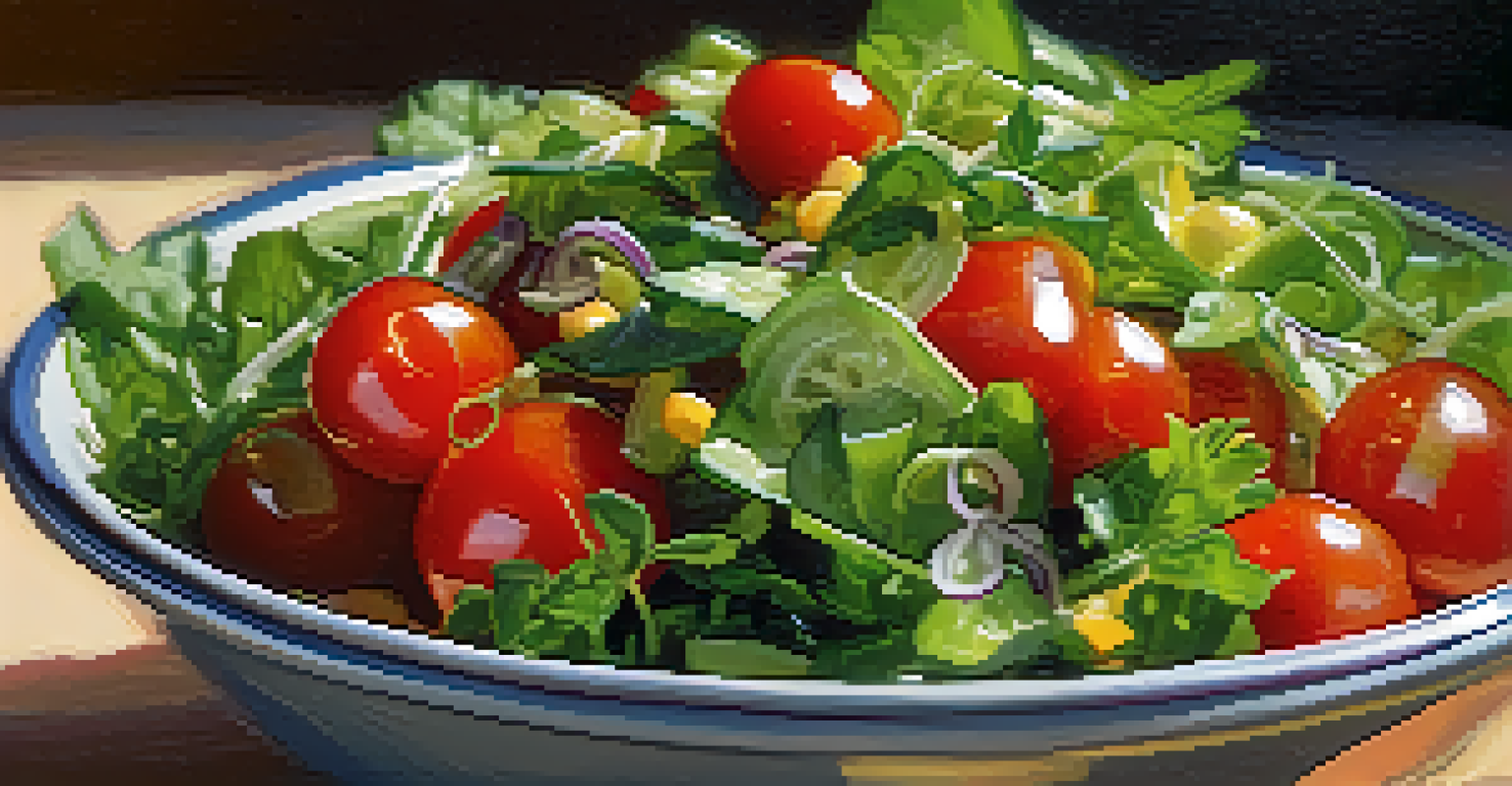Cooked Foods: Preserving Nutrients Through Smart Cooking

Understanding Nutrients: The Building Blocks of Health
Nutrients are essential compounds in our food that support body functions. They include vitamins, minerals, proteins, fats, and carbohydrates, each playing a unique role in keeping us healthy. Understanding these building blocks helps us make informed cooking choices to preserve their benefits.
Let food be thy medicine and medicine be thy food.
When we cook, some nutrients can be lost in the process. For example, water-soluble vitamins like Vitamin C can leach into cooking water, while heat can degrade certain nutrients. By knowing how different cooking methods affect nutrient retention, we can choose techniques that keep our meals nutritious.
Cooking is not just about flavor; it's also about health. By preserving nutrients, we ensure our bodies get the maximum benefits from the food we eat, which can lead to better energy levels, improved immunity, and overall wellness.
Choosing the Right Cooking Methods for Nutrient Preservation
Some cooking methods are better at preserving nutrients than others. For instance, steaming and microwaving often retain more vitamins compared to boiling, where nutrients can dissolve into the cooking water. Opting for these gentler methods can help your meals maintain their nutritional value.

Additionally, methods like sautéing and stir-frying, which use minimal cooking time and lower temperatures, can also help in keeping nutrients intact. The key is to cook quickly and at the right temperature to avoid breaking down sensitive nutrients.
Nutrient Preservation is Key
Choosing the right cooking methods, like steaming and sautéing, helps retain essential nutrients in your meals.
Incorporating a variety of cooking methods can keep your meals interesting while also maximizing nutrient retention. Experimenting with different techniques can lead to delightful dishes that are both tasty and health-conscious.
The Power of Whole Foods: Nutrient Density Matters
Whole foods, such as fruits, vegetables, whole grains, and lean proteins, are packed with nutrients. Choosing these foods over processed options ensures that you get the most vitamins, minerals, and antioxidants in your meals. Nutrient-dense foods not only support health but also contribute to a balanced diet.
Eating whole foods is not only healthy but also a way to honor the environment and our bodies.
For example, instead of reaching for refined grains, which often lose nutrients during processing, opt for whole grains like brown rice or quinoa. These options are richer in fiber and essential nutrients, making them a healthier choice for your meals.
Combining whole foods with smart cooking techniques amplifies the nutrient benefits. By focusing on whole ingredients, you ensure your dishes are not only delicious but also power-packed with nutrition.
Cooking with Skin: Embracing Nature's Packaging
Did you know that many fruits and vegetables have nutrient-rich skins? For example, potato, apple, and cucumber skins are loaded with fiber and essential nutrients. By cooking with the skin on, you can enhance the nutritional value of your meals significantly.
When preparing vegetables, consider a quick wash rather than peeling them. This simple change can help retain more of their natural goodness. Plus, it adds texture and flavor to your dishes, making them even more enjoyable.
Whole Foods Are Nutrient Powerhouses
Opting for whole foods over processed options ensures you get the maximum vitamins, minerals, and antioxidants.
Incorporating skin-on produce into your cooking can be an easy way to boost your nutrient intake. So next time you're in the kitchen, remember that nature's packaging might just be the key to a healthier meal.
The Role of Timing: Cooking Duration and Nutrient Loss
The duration of cooking plays a crucial role in nutrient preservation. Overcooking vegetables, for instance, can lead to significant nutrient loss, especially in terms of vitamins. Understanding the timing can be the difference between a nutritious meal and one that's lacking essential nutrients.
To avoid overcooking, aim for vibrant colors and a crunchy texture. This not only retains nutrients but also enhances the visual appeal of your dishes. A well-cooked vegetable should still have a bit of bite to it, making it more enjoyable to eat.
Being mindful of cooking times can enhance both the taste and nutrition of your meals. Simple adjustments, like reducing cooking time, can lead to delightful dishes that are both satisfying and healthful.
Flavor Boosters: Herbs and Spices for Nutrient Enhancement
Herbs and spices are often underrated in terms of their nutritional benefits. Many of these flavor enhancers, such as garlic, turmeric, and oregano, are packed with antioxidants and anti-inflammatory properties. Adding them to your meals not only elevates the taste but also boosts the nutrient content.
Incorporating fresh herbs into your dishes is a simple way to enhance both flavor and nutrition. Consider garnishing a salad with fresh basil or adding cilantro to a salsa for an extra nutrient kick. These small additions can make a big difference.
Proper Storage Maintains Nutrients
Storing cooked foods in airtight containers and reheating wisely can help preserve their nutritional value.
Using herbs and spices creatively can transform your meals into nutrient-rich delights. So, don’t hesitate to sprinkle a little extra seasoning next time you cook — your taste buds and your body will thank you!
Storing Cooked Foods: Keeping Nutrients Intact
How you store your cooked foods can also impact their nutrient retention. For instance, keeping leftovers in airtight containers and refrigerating them promptly can help preserve their nutritional value. Exposure to air and light can lead to nutrient degradation over time.
Also, consider reheating methods carefully. Microwaving is often a quick way to reheat without losing too many nutrients, while stovetop heating might require more time and can affect nutrient levels. Choose your reheating methods wisely to keep those nutrients intact.

By applying smart storage techniques, you can enjoy your meals for longer while maximizing their nutritional benefits. Being mindful of how you store food is an essential part of cooking that shouldn’t be overlooked.